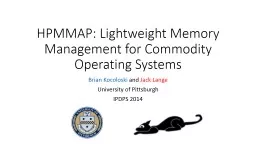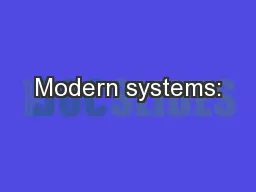PPT-HPMMAP: Lightweight Memory Management for Commodity Operati
Author : debby-jeon | Published Date : 2017-05-13
Brian Kocoloski Jack Lange University of Pittsburgh Lightweight Experience in a Consolidated Environment HPC applications need lightweight resource management
Presentation Embed Code
Download Presentation
Download Presentation The PPT/PDF document "HPMMAP: Lightweight Memory Management fo..." is the property of its rightful owner. Permission is granted to download and print the materials on this website for personal, non-commercial use only, and to display it on your personal computer provided you do not modify the materials and that you retain all copyright notices contained in the materials. By downloading content from our website, you accept the terms of this agreement.
HPMMAP: Lightweight Memory Management for Commodity Operati: Transcript
Download Rules Of Document
"HPMMAP: Lightweight Memory Management for Commodity Operati"The content belongs to its owner. You may download and print it for personal use, without modification, and keep all copyright notices. By downloading, you agree to these terms.
Related Documents














